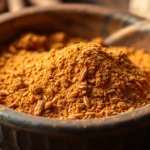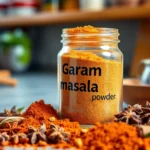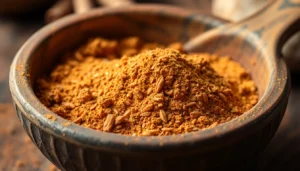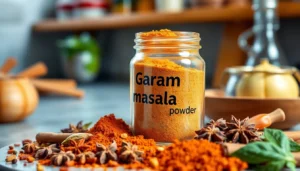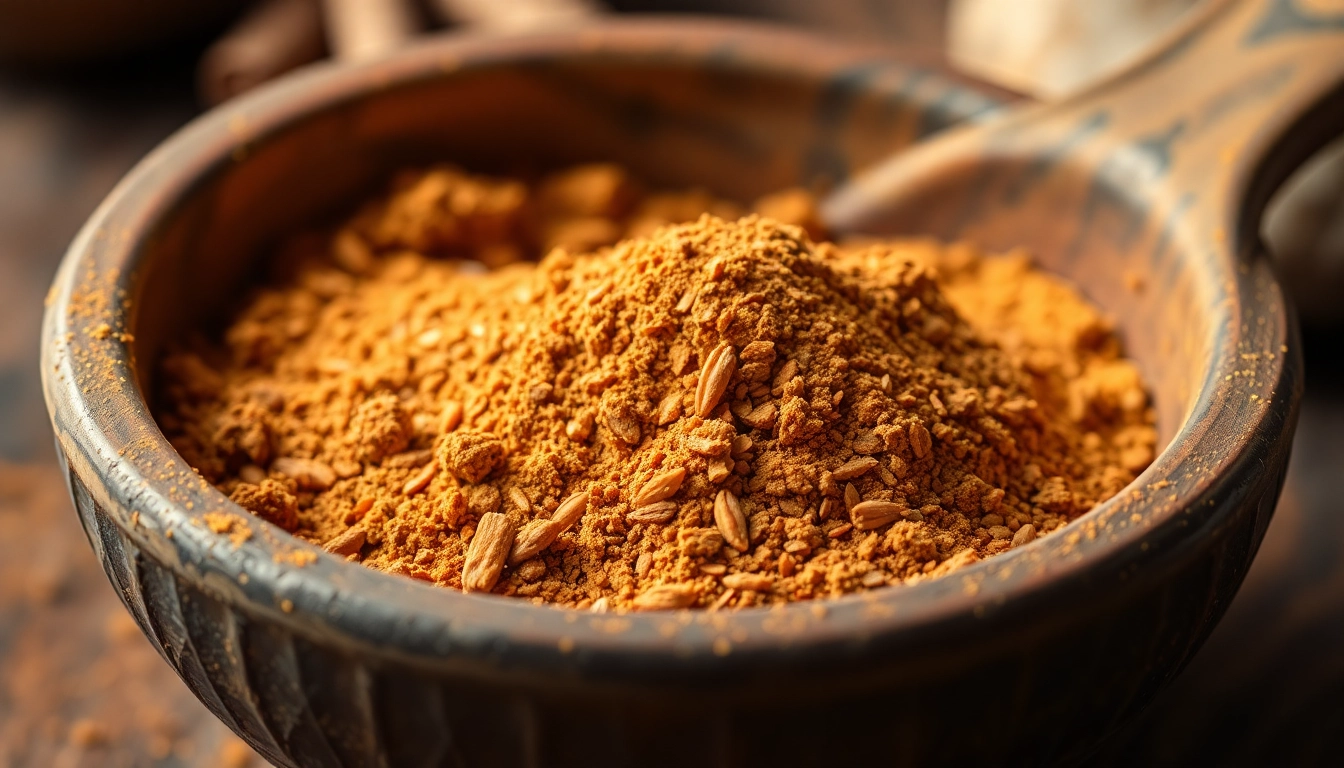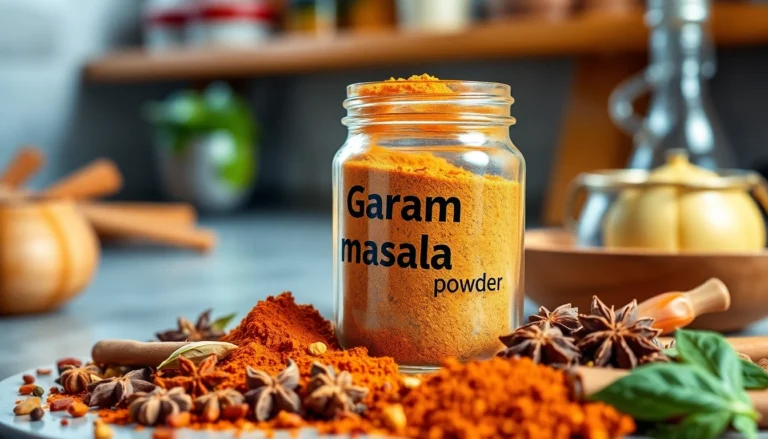Understanding Garam Masala Powder: Origins and Composition
Garam Masala, a revered spice blend in Indian cuisine, embodies centuries of culinary tradition and regional variations. Its name, translating roughly to “hot spice mix,” reflects its warming properties and aromatic complexity. Traditionally, Garam Masala is crafted from a carefully balanced combination of spices, which vary by region, recipe, and personal preference. The core ingredients typically include toasted and ground spices such as cumin, coriander, cardamom, cinnamon, cloves, peppercorns, and nutmeg. Some variations incorporate whole spices like star anise, mace, or bay leaves for added depth.
Understanding the origins and composition of Garam Masala is essential for any culinary enthusiast or food manufacturer aiming for authentic flavor profiles. Today, advanced manufacturing techniques and quality assurance processes, especially by leading Garam Masala Powder producers, ensure consistency, purity, and genuine aroma that replicate traditional home-cooked masalas.
Traditional Indian Spices That Make Up Garam Masala
The rich tapestry of Indian spices that form Garam Masala draws from indigenous herbs and fruits that have been used for centuries. Each spice in the blend offers specific health benefits and culinary attributes, collectively contributing to the complexity of flavors.
Common spices include:
- Cumin:
- Coriander:
- Cardamom: Offers sweet, spicy aroma.
- Cinnamon: Warm and sweet, balancing the blend.
- Cloves: Intense aroma with pungent flavor.
- Peppercorns: Contribute pungency and heat.
- Nutmeg: Adds a subtle sweetness and warmth.
- Coriander:
These spices are typically dry roasted to enhance aroma and flavor before grinding, which is a key process mastered by reputed manufacturers to preserve freshness and potency. Regional variations like Kashmiri or South Indian Garam Masala may include other ingredients such as fennel seeds or dried rose petals, bringing unique regional nuances.
The Cultural Significance of Garam Masala in Cuisine
Garam Masala holds a revered place in Indian culinary culture, symbolizing tradition, regional identity, and the art of spice blending passed down through generations. It is an essential ingredient in many signature dishes, including curries, stews, roasted vegetables, and even beverages like chai. Its role extends beyond flavor enhancement; Garam Masala also has known medicinal benefits, like aiding digestion and balancing doshas according to Ayurveda principles.
In cultural festivities, celebrations, and everyday cooking, Garam Masala’s presence signifies warmth and hospitality. Modern chefs worldwide recognize its versatility, integrating it into fusion cuisines, but authentic usage respects traditional proportions and preparation methods.
Differences Between Garam Masala and Other Spice Blends
While Garam Masala is distinct, understanding how it differs from other spice blends helps optimize its use. For instance:
- Chaat Masala: Contains tangy elements like dried mango powder (amchur) and black salt, used mainly in snacks and salads.
- Curry Powder: Western adaptation often includes turmeric, fenugreek, and additional herbs, with a milder, less aromatic profile compared to Garam Masala.
- Punjabi Masala: Similar to Garam Masala but may include additional ingredients like star anise or nutmeg, with regional variations marked by roasting techniques.
Garam Masala’s hallmark remains its aromatic complexity and warming effect, making it a versatile and essential spice mix in traditional Indian cooking. Precise blending and sourcing from certified manufacturers ensure authenticity and quality for culinary excellence.
Choosing and Purchasing High-Quality Garam Masala Powder
Factors to Consider When Selecting Garam Masala
High-quality Garam Masala begins with sourcing premium spices. Key factors include:
- Freshness: Opt for recently ground spices; they retain vibrant aroma and flavor.
- Authenticity: Look for genuine Indian or regional brands, certified by food safety authorities.
- Ingredients: Verify that the blend contains natural spices without artificial additives or fillers.
- Packaging: Airtight, opaque packaging preserves freshness and prevents moisture absorption.
How to Identify Fresh and Authentic Garam Masala
Authentic Garam Masala has a fragrant aroma, which should be intense yet balanced. It should not smell musty or chemical-like. Tasting a small amount reveals layered spices without bitterness or artificial flavor. Checking the certification labels, origin, and manufacturing date helps ensure authenticity.
Benefits of Buying from Certified Manufacturers and Exporters
Certified producers like Spice Nest guarantee adherence to international quality standards such as ISO, FSSAI, and HACCP. These certifications reflect a commitment to food safety, traceability, and sustainable sourcing, offering confidence in purity, aroma, and health benefits.
Effective Uses of Garam Masala Powder in Cooking
Popular Recipes Featuring Garam Masala
Garam Masala elevates a multitude of dishes. Classic examples include:
- Indian curries like chicken, lamb, and vegetable curries.
- Rice dishes such as biryanis and pilafs.
- Stews and lentil-based soups.
- Marinades for grilled meats and vegetarian kebabs.
- Even baked goods and snacks for an aromatic twist.
Tips for Incorporating Garam Masala into Various Dishes
To maximize flavor, add Garam Masala during the final stages of cooking or as a finishing spice. Toasting the powder briefly in oil before introducing other ingredients releases its full aroma. For soups and stews, a teaspoon is typically sufficient; adjust based on servings. Experimenting with quantities ensures a customized flavor profile.
Balancing Flavors with Garam Masala for Perfect Taste
Since Garam Masala is potent, balance it with acidity (like lemon juice or tomatoes), sweetness (honey or sugar), and salt to achieve harmonious dishes. Combining it with other spices like turmeric, red chili powder, and ginger can further refine the dish’s flavor and aroma.
Health Benefits and Nutritional Value of Garam Masala
Antioxidant and Anti-inflammatory Properties
The spices in Garam Masala contain bioactive compounds rich in antioxidants. Cloves and cinnamon, for instance, have well-documented anti-inflammatory effects, helping reduce oxidative stress and inflammation in the body.
Boosting Digestion and Immunity Naturally
Garam Masala stimulates digestion by promoting enzyme activity, reducing bloating, and easing gastrointestinal discomfort. Its antimicrobial properties also support immune health, making it a natural healer in daily nutrition.
Storage Tips to Maintain Freshness and Potency
Store in airtight containers in a cool, dark place away from direct sunlight. Avoid moisture and humidity to prevent clumping and flavor loss. Regularly check for aroma and flavor to determine freshness; replace if flavor diminishes.
Market Trends and Industry Insights for Garam Masala Powder
Growth of Organic and Certified Spice Products
The increasing consumer demand for organic, gluten-free, and all-natural products is propelling the growth of certified Garam Masala. Reputed manufacturers invest in organic certification and international quality standards to meet these preferences, boosting export opportunities.
Export Opportunities and Global Demand
India remains the leading producer and exporter of authentic Garam Masala, with global markets for Indian spices expanding rapidly. Countries in Europe, North America, and Middle East are seeking high-quality, organically certified spice blends, creating robust demand channels.
Upcoming Food Exhibitions and Trade Shows for Spice Manufacturers
Participation in events like Biofach, Gulfood, and FOODEX Asia offers platforms for manufacturers like Spice Nest to showcase their authentic spices and connect with international buyers. These shows also facilitate networking, market research, and brand positioning, crucial for future growth.
